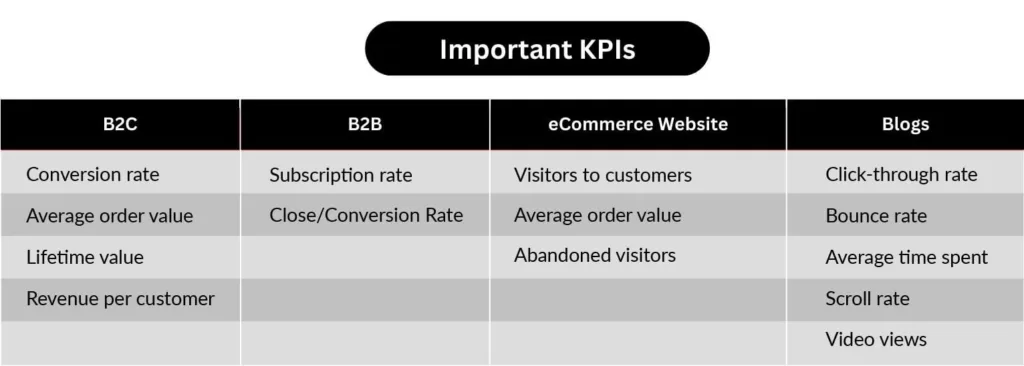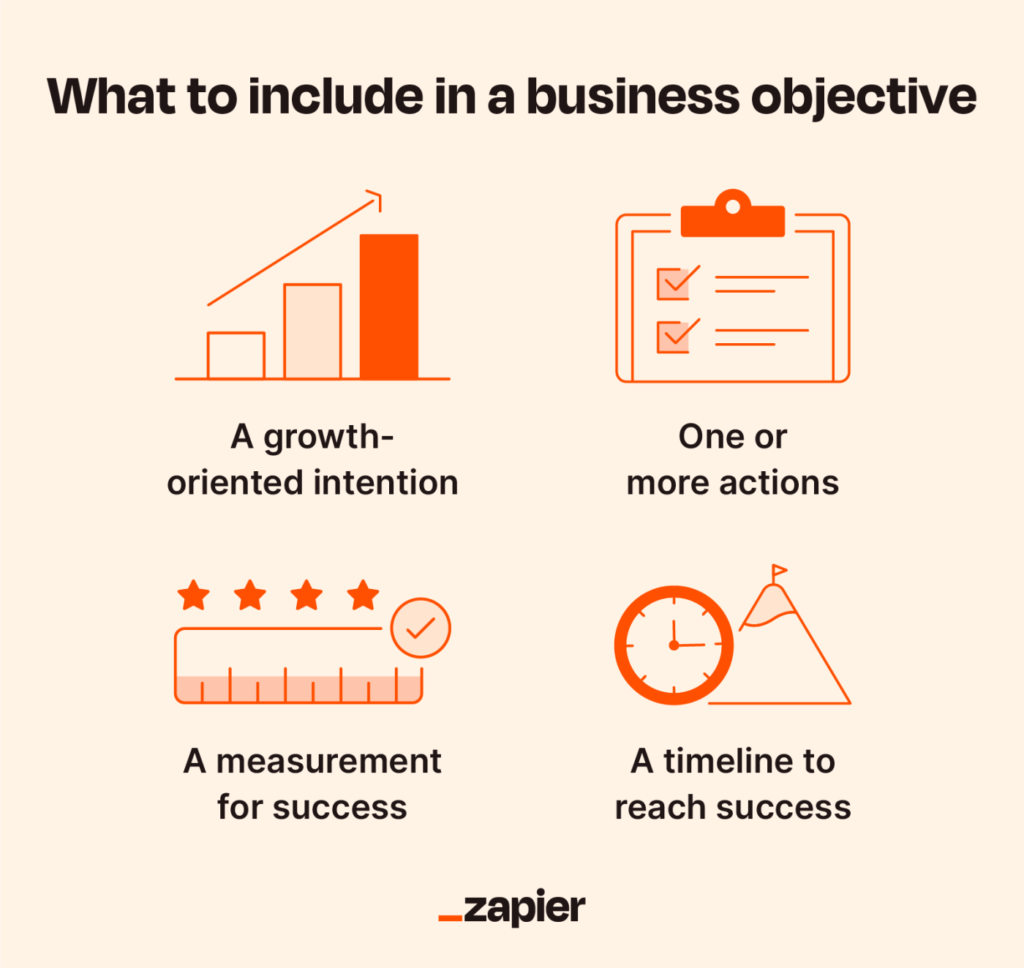Starting a business is not a cup of tea and running is not as easy as having a glass of water. There are around 333 million companies worldwide as stated in the Statista report. Do you think it is easy to cope with them and earn a hefty amount of revenue? I don’t think so!
The most important thing in business is its goal and objective. When you started a business, what was your aim? Why did you want to start a business? To earn a profit, and be a brand that everyone knows, just like Tesla, right?
If that’s the case, then you need to set a business objective. Now, you will think, how do you define business objectives and importantly what it is? Don’t worry we got your back!
Table of Contents
- What is a Business Objective?
- How to define business objectives?
- What are the ways that can help you define business objectives?
- Example of business objectives:
- The Bottom Line:
In this article, we will learn what a business objective is and how you define one!
What is a Business Objective?
Let’s say you decide you want to grow your business, increase sales, and have new branches abroad in the upcoming years. This is your goal. It can be intangible and non-measurable.
Whereas that’s not the case with business objectives. Objectives are the ones that are measurable and help you to achieve your goals.
Let’s hear it in the words of ChatGPT, “Business objectives are specific, measurable, and time-bound goals that a company sets to achieve its overall mission and vision. They are important because they provide a clear roadmap for the organization and help ensure that everyone is aligned with the company’s overall goals.”
Overall, business objectives help companies to focus their efforts, improve their performance, and achieve long-term success.
Now that you know what business objectives are, let’s move ahead and see how you can define those objectives.
How to define business objectives?
Defining objectives is critical for every business. A simple miss here and there can alter the course of your business’s existence. There are three steps that you need to follow to define your business objectives (crystal clear), and they are:
Step 1: Defining the vision and mission:
Having a vision and mission is necessary, be it your life or business. Without them, you will reach nowhere. So, the very first step is to define them both for your business. A clear vision and mission can lead your company on the road to growth and success. To define the vision, ask yourself the following questions:
- What is the purpose of your business?
- What are your long-term goals and aspirations for your business?
- What value does your business offer to your customers and the community?
- What sets your business apart from competitors in the industry?
- What is your goal when it comes to employee and customer satisfaction?
- What are the core values that guide your business decisions and actions?
- What impact do you want your business to have on society and the environment?
- How do you envision your business evolving and adapting to changing circumstances in the future?
- How will you measure the success of your business’s vision?
- How will you communicate your business’s vision to your employees, customers, and stakeholders?
Step 2: Determine specific, measurable, and time-bound goals:
After discovering the business’s vision and mission, the next step is to determine the goals. While defining the goals for your company make sure they are specific, measurable, and time-bound. Remember objectives can never be intangible or immeasurable, so your goals shouldn’t be too.
- Specific: As in what do you want to achieve, higher sales or higher production?
- Measurable: how much higher sales or production do you want 50%, 60%, or XY%?
- Time-Bound: By when do you want the goal to be achieved – within the next quarter or a year?
Step 3: Selecting KPIs:
Once you have identified your business goals, prioritize them based on their importance and feasibility. Develop an action plan that outlines the steps needed to achieve each goal, including timelines, budgets, and responsibilities.
This will help you stay focused and organized as you work towards achieving your business objectives. You will be able to do that with the help of KPIs. While selecting the KPIs, you should first consider the metrics that you want to impact.
Some of the KPIs can be:
- Sales-related objectives: This can include revenue growth, customer acquisition, customer retention rate, conversion rate, and average order value.
- Marketing-related objectives: This can include website traffic, social media engagement, email open rate, click-through rate, and lead generation.
- Financial objectives: This can include gross profit margin, net profit margin, return on investment, cash flow, and debt-to-equity ratio.
- Operational objectives: This can include production efficiency, cycle time, inventory turnover, order fulfillment rate, and defect rate.
- Customer service objectives: This can include customer satisfaction rate, customer loyalty, response time, and resolution time.
- Employee-related objectives: This can include employee turnover rate, employee engagement, employee satisfaction, and training hours per employee.

KPIs should be set by analyzing previous results and seeking improvements, or in some cases, a decrease, including cost per acquisition, bounce rate, etc.
To set the KPI, you can follow the common template — ‘Goal’ (such as ‘increase the sales’) by a figure (such as ‘20%’) in a period (such as ‘15 months’). Hence, your KPI will be: Increase sales by 20% in 15 months.
What are the ways that can help you define business objectives?

1. Involve personnel from each level
While defining business objectives, it is essential to involve personnel from each level. It will help you set the objective more precisely.
Let’s say, your objective is to increase the profit by 25% by the end of next year’s end. While you decide what steps you take, someone from the upper level suggested increasing the prices of the product. You will likely agree but here you need to hear from the salesman’s perspective too. Why? He is the one selling your product and interacting with your target audience.
Upon asking, the salesperson said, we can’t raise prices as our customers are looking for quality at a reasonable price. If you had decided to raise prices, you might have suffered a loss instead. Now, what else can you do?
A representative from the machine department said, we can upgrade the machine, it will increase the number of products we produce, decrease the maintenance cost, no defective products, and will reach breaking even by the end of next year.
With these inputs, you can re-think your current objective of achieving 25% profit by next year’s end. Changing machinery can give you more production, leading to higher sales. Undoubtedly, your overhead will be lower by the targeted time frame but much higher by the end of the third year.
2. Outline the roadmap with a schedule
You can outline the roadmap to achieve your KPIs. It is easier to accomplish things with a schedule, whether you’re aiming for better grades or profits.
So, how do you make a roadmap with a schedule?
Let’s take one of your KPIs to be’ “Increase sales by 20% in 15 months.” Now, the following would be a roadmap with a schedule to achieve the objective:
Month 1-3:
- Analyze historical sales data to identify patterns, customer behavior, and areas for improvement.
- Identify target market segments and create a customer profile.
- Develop a comprehensive marketing plan and implement targeted advertising campaigns.
- Train the sales team on effective sales techniques and product knowledge.
Month 4-6:
- Increase the number of leads generated through targeted advertising campaigns.
- Improve the lead conversion rate by optimizing the sales process and improving customer engagement.
- Implement a customer relationship management (CRM) system to track customer interactions and personalize the sales approach.
- Monitor progress towards the sales targets and make adjustments as needed.
Month 7-9:
- Expand the product line or develop new offerings to increase customer value.
- Identify and leverage cross-selling and upselling opportunities.
- Analyze and optimize the pricing strategy to increase profitability.
- Continue monitoring progress and adjusting strategies as needed.
Month 10-12:
- Implement a loyalty program to retain existing customers and incentivize repeat business.
- Develop referral programs to increase customer acquisition through word of mouth.
- Increase customer engagement through personalized content and targeted email campaigns.
- Review progress towards the sales target and make adjustments as needed.
Month 13-15:
- Conduct a comprehensive review of all sales and marketing activities to identify areas for improvement.
- Implement any necessary changes to improve sales efficiency and effectiveness.
- Provide ongoing sales training and coaching to the sales team.
- Finalize efforts to reach the 20% sales increase goal.
3. Integrate changes
Don’t end the process of creating business objectives once you have achieved the desired results. Once you have got the result with your KPIs, it’s time you define your next business objective and make sure you integrate the successful changes too.
Defining objectives is an ongoing process, you are not supposed to stop once it’s done.
Example of business objectives:
Let’s see an example or two for business objectives:
1. Amazon: To become one of the most trusted customer-centric online retail websites.
The company can make a plan on improving delivery, offer a variety of high-quality products, provide 24/7 customer support, be transparent, and most importantly protect its customer data. With this more and more customers will trust Amazon for purchasing anything.
2. Zomato: To achieve the objective of getting a 15% increase in food orders on Christmas than on Thanksgiving.
The company can use the email marketing campaign to offer discounts on purchases and extra discounts on referring to family and friends. The email campaign will be targeted to attract customers who ordered on Thanksgiving and any other occasion along with regular customers.
The Bottom Line:
With this, we would like to put an end to the article on how to define business objectives. As said in the article, defining clear and measurable business objectives is essential for the success of any organization. The crystal clear objectives will make your company soar high in the sky with profits, higher sales, and utmost customer satisfaction. What else do we need as business owners?
